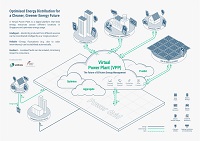Intermittent Generation Sources (“IGS”) typically comprise renewable energy generation such as solar and wind energy, where the power output fluctuates,depending on the weather and environmental factors. Based on current technologies, solar generation offers the greatest potential for deployment in Singapore. Solar energy brings about multiple benefits to Singapore, as it generates no carbon emissions and requires no fuel imports.
To ensure the sustainable growth of IGS, a balance has to be struck between the benefits of IGS and intermittency costs it imposes on the system. Hence, it is appropriate to consider a mechanism to allocate the fair share of reserves costs to IGS (henceforth referred to as the Intermittency Pricing Mechanism (“IPM”) in tandem with carbon tax. This paper articulates the proposed allocation method of reserves costs through the IPM to better recognise the characteristics and effects of IGS on the power system, particularly in anticipation of the growth of IGS capacity in Singapore. The IPM will determine the reserves cost based on all possible instances of complete or partialelectricity supply reduction from all types of generation, to ensure that the cost of reserves is allocated fairly to all generation types that contribute to the need for reserves, including IGS.
EMA is seeking views on the proposed methodology for the IPM identified in this consultation paper.















